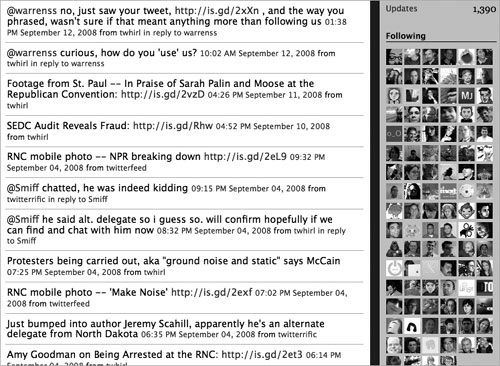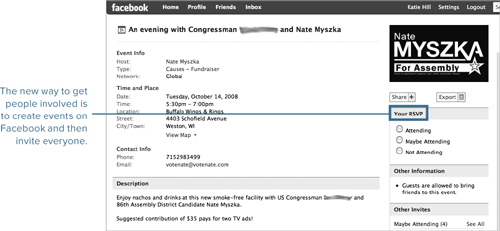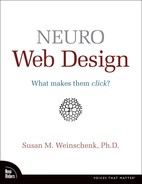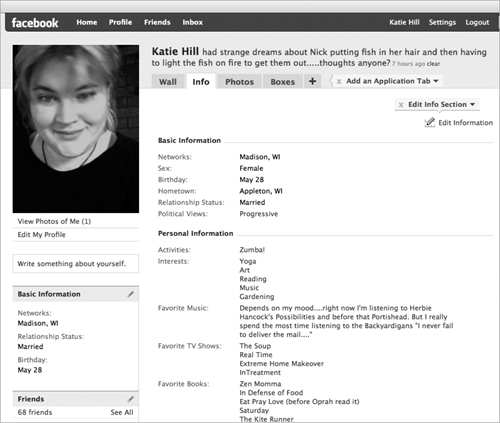
THE YEAR WAS 2000, and I was on the phone with a client from Motorola. Instead of talking about the project at hand, we found ourselves discussing cell phones. “I headed up the original team to invent the cell phone, you know,” he told me. I was impressed. “Yep,” he said, “my team invented the cell phone and then we shelved the entire project for years.”
“Why?” I asked. “Why didn’t you bring it to market right away?” He answered, “Well, we thought we’d only be making about 10 of them. Not much of a market.”
“Ten of them? Why did you think that?” I asked.
He replied, “We figured each head of state for major nations would have one. You know, the President of the United States, the head guy in Russia, and so on. We thought they’d use it to prevent a world war. I had no idea people would use it to call home before leaving work to see if they should pick up milk!”
Caught by Our Own Shortsightedness
THIS IS WHAT always happens. When we are thinking about new ways to use technology, we are stuck in our “present” way of thinking. The new, actual ways that technology will be used in the future don’t even occur to us. But there is one route out of this shortsightedness. And that is to think about being social.
We are social animals. Being human means being social. It is built into our brains and evolution to live together with others and to be very influenced by our “pack” or group. History shows us that whatever technology there is, we will find a way to use it to communicate—to make it social.
IF YOU SPEND some time thinking back on technology, you will see that there are many instances of how we have co-opted technology to use it as a means to be social and to communicate.
The printing press allowed people to communicate via the written word in a way that was much faster. Before the printing press, each book had to be copied by hand, a task that sometimes took years. The printing press reduced that time to days and, in some instances, only hours. That allowed people to communicate quickly. (Remember that much of the original printing was not in the form of long books; it was in the form of short pamphlets or even one-page “bills,” such as bulletins.) The printing press was truly a form of mass communication.
When the first telephones were being developed, they were viewed as an updated version of the telegraph. There was no plan to put telephones in homes. The assumption was that telephones would be in the telegraph offices and be used to convey messages from telegraph office to telegraph office (and from there, the message would be written out and delivered).
Even when the use of telephones expanded, they were used first in businesses, not homes. The inventors and initial manufacturers simply didn’t conceive of telephones in homes.
But consumers pushed the demand for technology that would help them communicate and help them be social. Consumers wanted telephones in their homes. We will always push the envelope to bend the available technology to purposes that extend and improve our communication and the opportunity to be social.
IF YOU LOOK up online descriptions of the history of the Internet, you will find a lot of articles about packet switching and other technologies associated with the Internet. But the truth is, the history of the Internet is actually founded in social needs and our collective frustration with machines that made communication slow and cumbersome.
J.C.R. Licklider was appointed as head of the United State’s Department of Defense Advanced Research Projects Agency in 1962. (It was called ARPA then. Now it’s called DARPA.) It’s true that he had been thinking about networks for a few years. But it was his frustration at having to use three different terminals that led to the development of the Internet.
At DARPA, Licklider had formed an informal group to study computer research. The group was dispersed at different organizations, and each organization had its own computer system, so he had three different screens, each connected to a different terminal. For those readers who are too young to remember this, in the “old days,” if you wanted to work on a computer system, you had to have that system’s terminal installed in your office.
Each of the three terminals had its own screen connected to a separate system, and each system had a different set of commands. If he was talking to someone at Berkeley on one terminal and he wanted to talk to someone at MIT, he had to get up from one terminal and log into another terminal, using a different set of commands on that one, and so on. He became frustrated with how difficult it was to communicate. He thought to himself, “It should work over one network.” And then he began the work that made the one-network concept a reality. He wanted ARPA scientists to be able to communicate more effectively over a computer network.
Today, the Internet is used for a wide variety of purposes. Certainly businesses use it to sell products and services. But it was initially used to communicate, and it has retained that use over time.
Email has become one of the most frequently used applications of computers. We use instant messaging both at work and at home.
It was just a matter of time before special Web sites would arrive whose purpose was linking people together. It was inevitable that this would happen, because humans will always take technology and find a way to use it to help them be social.
Early “social networking” Web sites included Classmates.com (started in 1995) and Epinions.com (started in 1999). Then MySpace came along in 2003. And LinkedIn targeted the business community (started in 2003).

Classmates.com was one of the first social networking Web sites.

Epinions was another early social networking site.

After Classmates.com and epinions, next came MySpace.

And then the business community decided to go social with LinkedIn.
Facebook began as a social networking site for college students in 2004, but, as of the writing of this book, Facebook has taken prominence as the social networking site for high school students, college students, and adults. Along came Twitter in 2006, helping us keep in touch with our social networks on the Internet and via text messages on our cell phones.

Twitter is all about short messages you can broadcast and read on the Internet or via text messages on your phone.
Mass Interpersonal Communication
SOCIAL NETWORKING SITES allow information to spread very quickly as they move from person to person, “virally.”

Social networking sites are changing the way we communicate about everything.
YouTube allows anyone, anywhere there is an Internet connection, to upload a video they create. After that, who knows who will be watching it. When my son had his wisdom teeth pulled, I drove him home from the surgery. While we were driving home, he used his digital camera to make a movie of himself under the influence of the dental drugs. Later that day I went to my local grocery store to pick up some soft food for him to eat. Imagine my surprise when someone stopped me in the store and said how funny they thought my son’s video was from the wisdom teeth surgery. My son had uploaded the video to YouTube where it was being virally spread all around—in a matter of hours. I just checked, and the video has been watched over 700 times and even has a five-star rating!

Videos spread virally, too.
When my daughter had her 17th birthday party, she didn’t send paper invitations, and she didn’t call her friends on the phone—she just sent out invitations via Facebook.

Hallmark beware—does anyone buy party invitations anymore?
When political candidates want to invite people to an event, or raise money, they send out Facebook invites.

B. J. FOGG (2008) has coined MIP (Mass Interpersonal Persuasion). This is a combination of mass media and persuasion techniques. He uses Facebook as an example of this new technology, especially the use of third-party applications.
One of those third-party applications is iLike, a social networking site that allows members to share music and information about music. iLike also sells CDs, concert tickets, and so on. iLke launched in October of 2006 and by June of 2007, it had three million members. A million members joined every month, and at this writing, membership is 30 million. Such is the power of being social.
Fogg and Eckles (2007) described what they called the “behavior chain” for enticing us to participate online at social networking sites. They describe three phases:
![]() Phase 1 is Discovery. We learn about the service and visit the site.
Phase 1 is Discovery. We learn about the service and visit the site.
![]() Phase 2 is Superficial Involvement. We try out the service and get started.
Phase 2 is Superficial Involvement. We try out the service and get started.
![]() Phase 3 is True Commitment. We create content, use the site, involve others, and stay active and loyal.
Phase 3 is True Commitment. We create content, use the site, involve others, and stay active and loyal.
A successful online social site must pay attention to each phase and decide how to get us to take action on each phase. For example, how is it that we learn about the service and decide to visit the site? What does the site do to entice us to try it out once we get there? Is there compelling content that we can create once we’re there? Is the site using viral communication so that we will be so excited by what we created that we will want to share it with others?
If the site wants to be as successful as iLike, it needs to focus on these target behaviors.
WEIKSNER, FOGG, AND LIU (2008) analyzed the types of persuasion used in Facebook applications. They identified that popular third-party applications (such as Poke, Superwall, and Hotness) use the basic principles of reciprocity, social validation, and similarity to promote themselves and cause a viral spread. For example, if you give me a “poke” on Facebook, then I may feel the need to give you a return poke or give you something back. All the principles and ideas in this book can be used on social networking sites.


